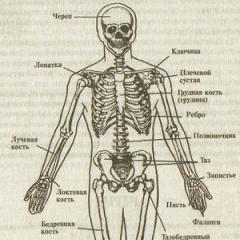How long does a brick house shrink? Shrinkage and other features of new homes
Reader question: Is it true that the house has to settle (it seems that this process takes two years!)? I heard the opinion that “cracks should appear in every house”.
Our advice. Every house gives shrinkage(except for the one standing on the rock), but not all shrinkage should lead to cracks! The scale of subsidence depends primarily on type of soil under the foundations and loads that the foundations transfer to this soil. Wall cracking depends on how uneven the shrinkage is under different parts of the house. This unevenness can be caused by the difference in both soil types and the loads themselves. The shrinkage time also depends on the type of soil and the load on it, but there is no time limit (for example, two years). Suffice it to recall the leaning tower in Pisa.
The shrinkage of the house can be foreseen, but this requires very detailed studies of the soil and the calculation of the pressure on the ground under the foundations. Since a detailed analysis of possible shrinkage costs a decent amount of money, it is usually not done when building private residential buildings. Unfortunately, some customers refuse not only detailed analysis, but even minimal soil studies. Often, as a result of such a decision, unsuitable foundations are made on complex soil. A typical project does not initially take into account the poor conditions for the construction of foundations. Project adaptation is often limited to affixing stamps on documents. Most people, having heard from the designer that they need to think about the possibility of making a foundation on piles, since the house can sag strongly, they would rather change the designer than listen to his opinion.
However, uneven house sinking sometimes it happens not through the fault of the designer, but solely due to performance errors. Insufficient concrete coverage of the rebars is most common, resulting in rust on these rebars and weakening foundations.
Reader question: If the question is "where to live?" is very acute, then can't you just build a house during the season, move in and start intensively heating it? I want to do this. Time matters to me, but I don't want to see cracked walls and fungus. The acquaintances moved in seven months after the first peg was driven in. Already now they have changed the windows and wooden doors, so much they bent. And what about furniture, carpets, bedding, which are threatened by moisture?
Our advice. Building in one season is a big challenge. An old adage of master builders says that in the first winter in a new house, you can allow your enemy to live! Fortunately, there are technical possibilities to shorten the construction cycle to one season, without fear of living in a damp house afterwards. To do this, even at the stage of project adaptation, it is necessary to provide for the use of materials with a minimum moisture content.
The presence of moisture contained in the masonry cannot be avoided, but it is relatively small, even in walls made of traditional materials with thick joints. It will be even less if the walls are made, for example, of aerated concrete with a density grade D400 on an adhesive mortar with thin joints. In order not to spoil the result, you need to provide a team of kameshchik with tarpaulin, which will cover the already completed sections of the walls from the rain.
If a layer of thermal insulation is provided, it is better to spend more money on mineral wool, than to paste over the walls with expanded polystyrene: mineral wool allows moisture from the walls to evaporate faster.
For walls and ceilings, instead of plasters, it is better to choose gypsum plasterboards. Self-leveling screed can be replaced with a traditional floor on logs (plasters and screeds are the main accumulators of moisture in a new house).
With regard to overlaps, the situation is more complicated. There is practically no choice here - they are reinforced concrete in most Ukrainian houses. You can give only one piece of advice - it is better to choose not monolithic, but often ribbed overlap.
Important
The house will dry out faster without increasing the temperature inside it! Moisture needs to be removed from the house, and properly working and efficient ventilation is responsible for this! In the first winter, it makes sense to help natural air exchange by installing fans in the ventilation ducts.
If you become the proud owner of a new brick house, you need to know all the features associated with it. In the first years of operation, such a parameter as the shrinkage of a brick house is especially important.

Brick shrinkage is the most important parameter of a freshly built house, which must be taken into account in the first years of its operation.
It should be noted that shrinkage is a completely natural process and cannot be avoided.
Design features

Depending on the type of soil, the shrinkage of the cement foundation of the house can last from 3 to 8 years.
Bearing walls press on the foundation of a brick (and not only brick) house, for this reason it is forced to sink. A lot depends on the type of soil on which a particular house was built. If the soil is soft enough, then the shrinkage of the brick house will be greater, the house will shrink deeper. This process can last at least 3 years, but the time frame can take up to 8 years. In order to protect your own house from the formation of various cracks in the masonry, it is necessary to arrange special seams, which are called deformation seams.
These seams are designed specifically to reduce the stress on the structural elements of the house in places where any deformation may appear. The expansion joint is a kind of cut in the structure of a brick house, which divides the building into separate blocks, thereby giving the structure some elasticity. To seal, this joint should be filled with insulating material.
Depending on their direct purpose, expansion joints are divided into:

In the process of laying bricks, it is necessary to make special shrinkage joints that will prevent the formation of cracks.
- Temperature.
- Shrinkage.
- Sedimentary.
- Anti-seismic.
For a brick house, which is affected by shrinkage, temperature and shrinkage joints are necessary. Expansion joints divide the building into several compartments from the roof to the ground level inclusive, without touching the foundation. The distance between such seams depends on the masonry, as well as the calculation of the air temperature in the winter season. Separate fragments of a house's masonry can be located on different floors. Shrinkage joints prevent the formation of various cracks, which reduce the bearing capacity of the brickwork.
Sealing cracks
Sealing of various cracks in masonry walls can be carried out only after the crack stops growing. Otherwise, all the efforts that were put into sealing the cracks will be in vain. In order to trace the gap, special beacons made of paper material should be reinforced on the wall and monitored for their integrity. As soon as such beacons stop breaking through, it will be possible to proceed directly to sealing the cracks formed in the masonry wall.
Preparation of cement mortar
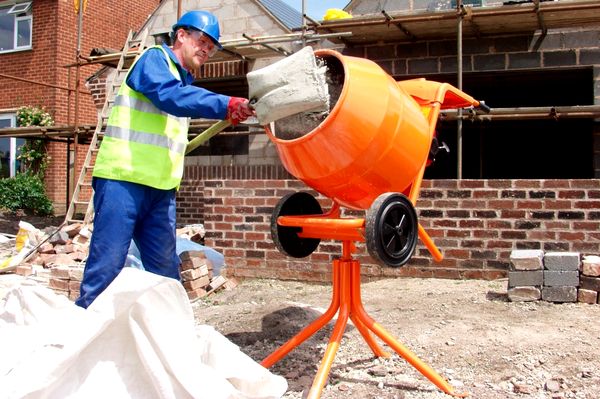
For high-quality mixing of large quantities of concrete, it is best to use a concrete mixer.
Also, with this approach, drainage is carried out around the building in order to avoid loads on the foundation, which arise from the effects of groundwater in the ground. But drainage in this case is not a ditch, but a pipe specially designed for such purposes (builders are also engaged in this at the initial stage). The shrinkage of the house is not supernatural. It takes place in all new buildings made of absolutely any material.
Shrinkage of brick multi-storey building can take a long time, therefore, it takes a significant amount of time to pass the check and get the final conclusion about the quality of the object.
The shrinkage of houses can last up to 10 years.
Construction multi-storey buildings is a rather complex and long-term process that has a huge number of features and nuances. At the same time, the construction of the building means the end of the work, but by no means the end of the testing of the building.
Types of structures and the process of constructing brick buildings
Monolithic frame house shrinks in one year.Acquisition of an apartment in a new building is a significant event for every person, and sometimes it is the dream of his whole life. Based on this, the desire to immediately move to a new home, equip it and live in peace is quite understandable. However, in reality, everything turns out to be not so simple, because often after a while, freshly laid ceramic tiles begin to fall off, and cracks go along the walls. This is due to the shrinkage of the house, which is a natural process that can lead to significant deformations of the building. It arises as a result of the pressure of the total mass of the building, which is more than one ton, on the foundation.
As a rule, this phenomenon depends on the type of building. Today, the construction of multi-storey buildings is carried out using the following techniques and materials:
- panel objects;
- monolithic frame buildings;
- brick buildings.
Each of these types of buildings implies different time periods of shrinkage, due to the peculiarities of their design. So, under normal conditions panel house is established in 3-6 years, and the monolithic-frame object, which is the least massive and solid, is able to undergo a full procedure in just 1 year.
The shrinkage of a brick house is the most long-term process, since the building itself consists of many smallest parts, connected with cement mortar. In addition, the weight of brickwork is much higher than the mass of other materials used for construction multi-storey buildings... Therefore, the foundation of a high-rise brick building requires significant reinforcement, which is not always carried out correctly. The shrinkage of a brick house can last up to 10 years, and in especially difficult cases it can have an unlimited period.
Types of shrinkage, their role in the formation of a building and possible consequences
Shrinkage panel house occurs from 3 to 6 years.The shrinkage of a house can have many manifestations that can not only affect the interior decoration, but also disrupt the overall integrity of the building, its stability.
Although this phenomenon is rare and represents a violation of construction technology, it can still take place. Usually, in this case, a brick house gives several cracks on the outside and undergoes slight deformations on the inside, after which the shrinkage procedure ends and the object becomes monolithic and strong.
The shrinkage of brick buildings has many features, among which the following types of deformations occupy an important place:
- thermal expansion or contraction of the material;
- shrinkage.
Each of the above types of shrinkage has a significant effect on a brick house. In most cases, it is they who are responsible for the deformation of the building. Damage can look like this:
- cracking of surfaces;
- the formation of brick chips;
- masonry discrepancies;
- lagging plaster;
- subsidence of individual sections of the wall.
In some cases, the formation of such defects can be quite serious, in others, on the contrary, be completely invisible.
The coefficient of linear expansion of materials, which is directly related to the ambient temperature, causes an increase or, conversely, a decrease in the volume of a brick. So, in winter, during the period of the lowest temperatures, the brick becomes much smaller, and in summer, on hot days, its volume is the largest. This process is natural and is explained by the laws of physics. It is he who is one of the main reasons that the brickwork shrinks and deforms.
Another factor in the occurrence of deformations is the so-called shrinkage, that is, the effect of moisture on the material. The brick has a porous structure and perfectly absorbs water, which disturbs its internal structure and increases its mass. This aspect becomes especially important in winter, when the water begins to freeze and the masonry gradually collapses.
Factors responsible for the shrinkage of a multi-storey building
The periodic impact of such factors determines the long duration of the shrinkage procedure, in the process of which each element takes its definite place, and the house itself takes its final appearance... In general, the shrinkage procedure is not always the result of errors in calculations or non-compliance of construction technology with the necessary standards, although these factors also play a huge role. There are also many other nuances that need to be taken into account. The list of such criteria is as follows:
- type and model of bricks;
- soil features;
- shape and type of building;
- the height of the structure;
- compliance with building codes;
- climatic conditions of the area;
- quality of the foundation.
Each of these parameters can cause a violation of the external characteristics of a brick house and a change in its structure. However, such consequences are extremely rare. As a rule, shrinkage is quite smooth and manifests itself in the form of several cracks on the surface of the walls. At the same time, at the end of such a process, the object acquires not only its complete appearance, but also stability, which allows it to be operated for many years.
Buying an apartment in a new building or becoming the happy owner of a private house, you want to start interior decoration as soon as possible, so that the house will finally acquire a cozy look and become comfortable to live in. But experts warn: do not rush and buy Decoration Materials... Why? Because the building has yet to go through one more stage - shrinkage. All structures, without exception, are subject to this process. It is based on the interaction of the physical properties of materials and the environment. That's when the structure is settled, the shrinkage of the house will stop, the decoration will justify the money and effort spent. In a hurry, residents run the risk of wasting time and money, because finishing materials may become unusable under the influence of internal deformation of the house structure.
After what period of time you can go from a rough repair to a real one, you can find out a thorough one by finding out the features of shrinkage in different types of houses, taking into account the influence of factors. If everything was calculated and made correctly, then the shrinkage will take place practically without affecting the used tiles, wallpaper, laminate. The owners will not have to dismantle the raised floors and find the tiles that have broken off the wall.
Shrinkage is a natural process for new buildings. The foundations and piles must be adjusted to the weight of the floors and walls. In addition, if the house is an apartment building, then you need to take into account the weight of everything that residents bring inside. Development companies include the time required for final stabilization of the structure in the project plan. What factors affect the degree of shrinkage of a building? This is a whole list of criteria based on research results:
- the peculiarity of the soil in the selected area (on solid soils, the process is completed faster than on moving ones);
- type of foundation;
- ground water level.
In a new home, the process can take from 2 to 6 years. On average, a building adapts in 2-3 years. It should be borne in mind that the greater the weight of the structure, the more difficult the process is. A brick structure will adapt worse than a cellular concrete structure, which has much less weight.
Shrinkage of a brick-monolithic house  What is the shrinkage of a wooden house
What is the shrinkage of a wooden house
When can you start repairing and finishing
The desire to tidy up the living space is more than understandable. The rough finish does not add comfort. However, no matter how strong the desire to take on repairs, hold back your emotions and financial resources. Construction experts strongly recommend waiting at least 2 winter periods. During this time, the active part of the house shrinkage process will pass and further finishing will not suffer, or will take place with minimal losses.
In the process of shrinkage, the floors and walls are slightly displaced relative to the original geometric shape. It is impossible to determine these changes by eye, but it is quite enough to deform the finishing materials on the walls, floor and ceiling.
How is it shown? For example, ceramic tiles crack or come off in the kitchen or bathroom. The appearance of cracks in the tile joints in the same premises is possible. Wallpaper may fall behind, paint and plaster on the ceiling and walls may crack and crumble. The consequence of shrinkage will be the "excitement" of the laminate and parquet panels. The openings of windows and doors are sagging.
The conclusion suggests itself: until the process of shrinkage of the building has passed, it is better to spend money exclusively on cosmetic repairs.
 Shrinkage may cause cracks in floor tiles
Shrinkage may cause cracks in floor tiles Is it still possible to make a thorough interior decoration? Even experienced craftsmen finishers will not give a 100 percent guarantee. If you really want to, then as a way out, experts suggest using materials that have a sufficient degree of elasticity to transfer the changing geometry of surfaces, these include:
- stretch ceiling;
- vinyl tiles;
- non-woven or liquid wallpaper;
- special plasters with elastic effect.
If the type of building allows a small percentage of deformation, then the materials used in the decoration will be able to adapt to the displacement of surfaces and maintain the quality of the coating. "Gutta-percha" finishing will cost more than usual, therefore, before deciding on an experiment, you should weigh your possibilities.
When purchasing a home with finishing made by the developer, also prepare yourself in a few years to produce renovation work... However, by that time, the active shrinkage phase has already been passed, and you can safely use the materials you like.
 Shrinkage of the foundation can contribute to cracking of gas silicate masonry
Shrinkage of the foundation can contribute to cracking of gas silicate masonry Features of shrinkage in different types of houses
Shrinking a house is a change geometric parameters building elements due to the drying out of the materials from which they were made. This process must be taken into account when erecting a structure, since it is natural and it is impossible to do without it. With competent calculations, shrinkage will take place harmoniously and without consequences for the structure.
The settlement of the building, with which shrinkage is sometimes confused, on the contrary, is not natural and signals the instability of the soil in the selected area or the weakness of the foundation. Settlement can cause not only cracking of walls, but even their collapse.
The degree of shrinkage of the building directly depends on the material chosen for the construction. Wood buildings are considered the most problematic in terms of shrinkage. Concrete, foam blocks and bricks are also subject to this process, but not in such a pronounced form.
| House type | Main shrinkage period | Features of the course |
| Panel | 2-3 years |
|
| Monolithic frame | 1 year |
|
| Brick | 3-4 to 5-6 years old |
|
 Deformations in concrete floor slabs
Deformations in concrete floor slabs Panel
Shrinkage of a panel house occurs on average per year. The changes are so noticeable that the rough coating can in no way hide the traces of deformation. It is recommended to use coatings for the first repair, which can then be easily dismantled - laminate or linoleum. Most of the shrinkage can be quite noticeable in relation to the change in the geometry of the planes of the walls, floor and ceiling. The result can be noticeable cracks and distortions in the area of corners and tile joints. The slabs themselves remain unharmed. Very often, after shrinkage, apartment owners have to think about the need to level the floor. Ideally, of course, it is better to wait altogether with the repair before the active stage of shrinkage passes. It may not be so comfortable, but financial losses will be minimal.
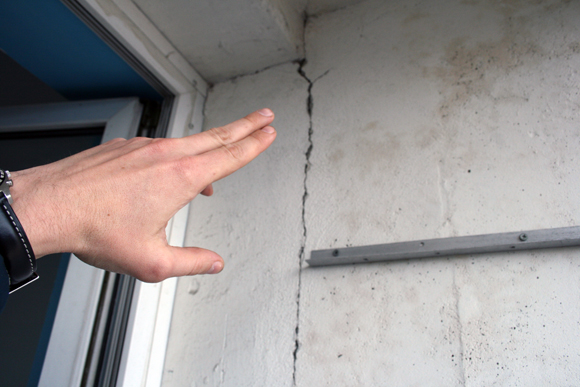

Brick
In the production of building materials, the technology includes the so-called shrinkage protection. Therefore, if the shrinkage has a significant percentage, this signals a low quality of the material, or a violation of the standards by the builders during the construction of the building.
At the production stage, the brick goes through a drying procedure, due to which the percentage of moisture in the product is reduced to zero. This means that further evaporation, which could lead to material shrinkage, is excluded. Concrete does not hold water in itself. In this case, freezing in the cold season or improper distribution of the load within the structure may become the cause of shrinkage. If the building was erected in the autumn-winter period, there is a high probability that the materials may get wet, and after being saturated with moisture, they will freeze. As a result, moisture inside the cracks and pores turns into ice, which tends to expand. This can lead to the formation of severe external cracks.
Another disadvantage of brick buildings is the large number of seams. These gaps, if the masonry was of insufficient quality, can accumulate moisture inside itself, which, under the influence of temperature changes, will expand or decrease. The porosity of a brick, in comparison with other types of building materials, is its advantage and disadvantage at the same time. When building brick houses, builders must be very careful to ensure that all gaps are minimal and well designed. The degree of shrinkage of a brick house in comparison with a wooden one is minimal, but it will take 3-4 years in duration.
 A crack in the ceiling is the first sign that a building is shrinking.
A crack in the ceiling is the first sign that a building is shrinking. Monolithic frame
At the heart of the monolithic-frame structure is a supporting frame, made not using welding, but made with the help of vertical columns. This is a solid system in which the frame is assigned the role of support for the structure as a whole. With this approach to construction, the risk of cracking is minimized.
Shrinkage in houses monolithic type is minimal in comparison with other types of buildings, since the one-piece structure qualitatively distributes the load on the foundation, due to which the shrinkage occurs evenly. For people living in the house, the changes are almost imperceptible, compared to a brick building. However, there may be soil subsidence under the monolith. In this case, a strong frame protects the building from significant deformations. This makes it possible to carry out repair work in a new building almost immediately.
True, if sufficient geological and geodetic studies were not carried out or there were serious violations in the construction technology, then even monolithic structure able to show unusual miracles of shrinkage.
 The consequences of the shrinkage of a brick-monolithic house
The consequences of the shrinkage of a brick-monolithic house Factors affecting shrinkage
It has already been mentioned that the shrinkage of the foundation of a house is a natural and logical phenomenon. The degree of its severity is influenced by external and internal factors. By taking into account their influence on the structure, undesirable manifestations can be prevented in the future.
External
The group of external factors includes soil mobility - the uneven occurrence of soil layers leads to the fact that the movement at different ends of the building may differ. There are several types of this factor:
- the depth of soil freezing - it is not the soil itself that freezes, but the moisture in it. When water freezes, it causes the soil to shrink, and when it comes time to melt, it begins to expand. The soil around the foundation swells and begins to squeeze it. With a significant degree of freezing, the foundation lies at a great depth, since it must be laid deeper than the soil freezes. Accordingly, the shrinkage will be longer. In addition, the degree of freezing affects the strength of the foundation, because periodic squeezing leads to the gradual destruction of the base of the house;
- depth of groundwater - moisture has a serious effect on the foundation of a building, but the degree of its influence is not the same. The blind area protects the upper part of the foundation from water, but the lower part is located underground. Despite the fact that rainwater also penetrates into the ground, the main impact comes from groundwater. Due to the difference in humidity, the foundation may shrink in the lower and top parts differently regarding time. If the groundwater is close to the surface, drain the foundation to reduce moisture exposure;
- horizontal - displacement leads to a tilt of the foundation to the sides;
- vertical - here the movement of the layers is characterized by upward or downward displacement. The foundation either falls through or is pushed out;
- mixed mobility can displace the base of a building both vertically and horizontally. To reduce mobility and stabilize the soil, the foundation is installed on a foundation cushion of rubble, sand and concrete;
- climatic conditions - the territory of our country is characterized by a humid climate, clay and sandy loam soils, as well as low temperatures. The soil freezes deeply, which must be taken into account when building a foundation. Failure to comply with construction technology can lead to serious deformation of the building during shrinkage;
- season - you should not build a foundation in spring or autumn, when there is a lot of rain and the soil is saturated with moisture. This is especially important if further freezing is possible, which will negatively affect the integrity of the foundation.
 Scheme for sealing a crack near a brick wall
Scheme for sealing a crack near a brick wall Internal
- expansion and contraction of building materials. Due to the temperature difference, substances expand or contract. In the case of the foundation of a building, there is an impact from both sides. Temperature affects the foundation itself and the soil in which it is submerged. So that this physical deformation does not harm the structure, expansion joints are made in the foundation;
- moisturizing and drying materials. The main process causing shrinkage is drying of building materials. When moisture evaporates, the structure of the building becomes lighter, decreases in volume. If the materials get wet, then, on the contrary, swelling occurs, weight and volume increase. Shrinkage lasts exactly as long as is required for maximum moisture evaporation, then the materials acquire maximum strength. The speed of the process will directly depend on the air temperature and humidity;
- the quality of the materials used - the foundation bears a heavy load, therefore the materials at its base must meet all the requirements and construction standards. Stamps, fractions should be used only those that are spelled out in regulatory documents. The quality of the building structure will depend on the clarity of the technology.
The foundation must stand before the building itself is erected. Otherwise, the shrinkage process will continue under the influence of the walls and load-bearing structures... As a result, some areas will sag, cracks will form on the walls, foundation. If the deformation is too strong, the house can simply collapse.
Based on the above, we can conclude: the shrinkage of a house is a natural process, but not always subject to warranty periods. Its course is greatly influenced by internal, external groups of factors, as a result of which the same construction technology can give different results. Moreover, in addition to the quality of the walls and floors, the properties of the foundation and how competently it was executed are very important. Did the builders take into account the type of soil mobility, did they measure the depth of the groundwater flow? Has drainage been taken care of for the foundation and how good is the foundation pad? There are many nuances, so in order for the finishing to become a timely event, it is worth making sure that the house is built in accordance with all applicable standards.
Video
Describes in detail what problems can be encountered during the shrinkage of a building.
Photo with options for problems that may arise during the shrinkage of a building
What threatens the shrinkage of an apartment building.
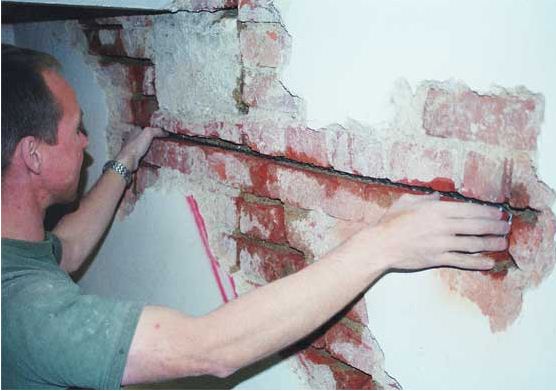
![]()

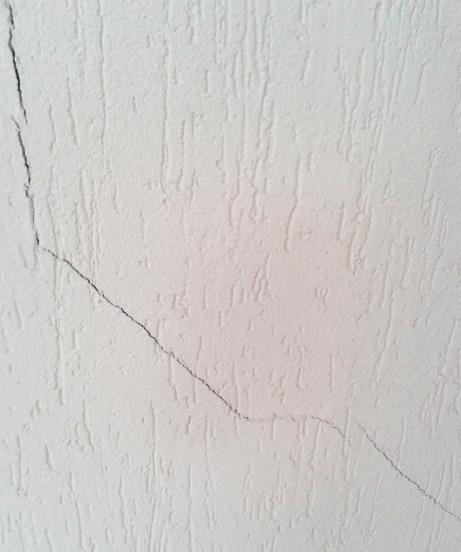
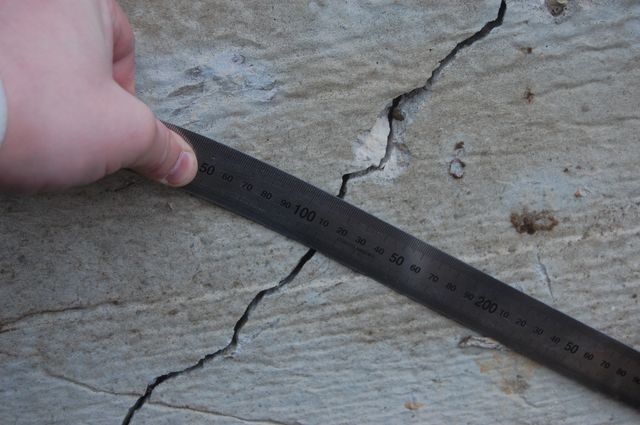
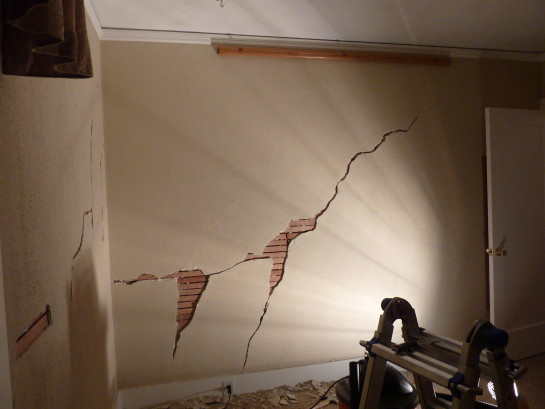
For most people, the opinion is that buying a new house or building it with your own hands eliminates all the problems associated with the housing issue. It seems to them that a brick house is a very reliable structure, which is not afraid of the danger of deformations. Unfortunately, this is absolutely not the case. In fact, the shrinkage of a brick house can be quite significant. Its intensity consists of many components.
In order to understand what dangers await the owner of a brick house, it is necessary to disassemble all the features of the material used for construction, because it has both advantages and not very pleasant disadvantages.
Shrinkage force
Actually, when they talk about brick houses, they mean, first of all, the shrinkage of the foundation. For brick houses rather severe shrinkage is characteristic for the reason that the weight load-bearing walls very large. This feature is due to the fact that the brick is quite heavy building material... How much the foundation sags at the same time depends on the characteristics of the soil on which the house is located. The softer it is, the more the building will sink.
Shrinkage time
The shrinkage period of brick structures is quite long. It may seem strange, but sometimes the time frame for this process stretches for 7-8 years. True, sometimes everything happens and much faster - in 3 years.
How to avoid cracks
To avoid cracks, it is necessary to ensure the arrangement of special expansion joints in brickwork... They are not only shrinkage, but also temperature, that is, they are also designed to protect walls from cracks caused by temperature fluctuations. Such seams should be left in place for about two years.

Expansion joints in masonry

Expansion joints in masonry, option 2
When and how to make repairs
Due to the fact that brick buildings characterized by large shrinkage, you should not carry out major repairs inside the premises for a couple of years after construction. You can paste over the walls with wallpaper, and apply whitewash on the ceiling. Parquet can be laid on the floor, since shrinkage is not terrible for it. For tiles and tiles, place in brick house in the first years after construction should not be.
![]()
If you still can't wait to make a full-scale repair, it can be carried out in such a way as to avoid problems with shrinkage. It is necessary to select materials that are not afraid of shrinkage processes (while they must be of high quality), as well as invite a team of workers who know their job well.

